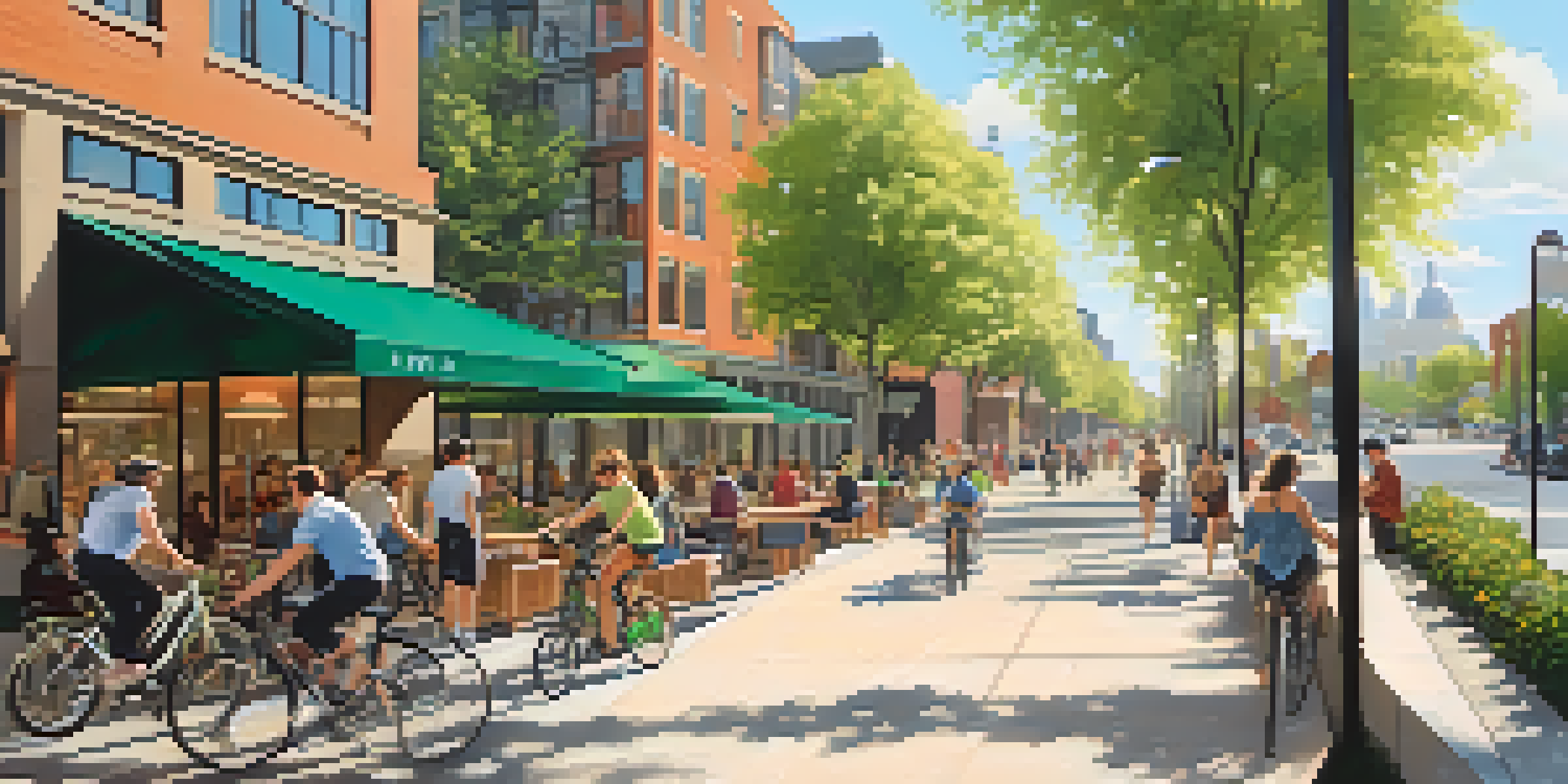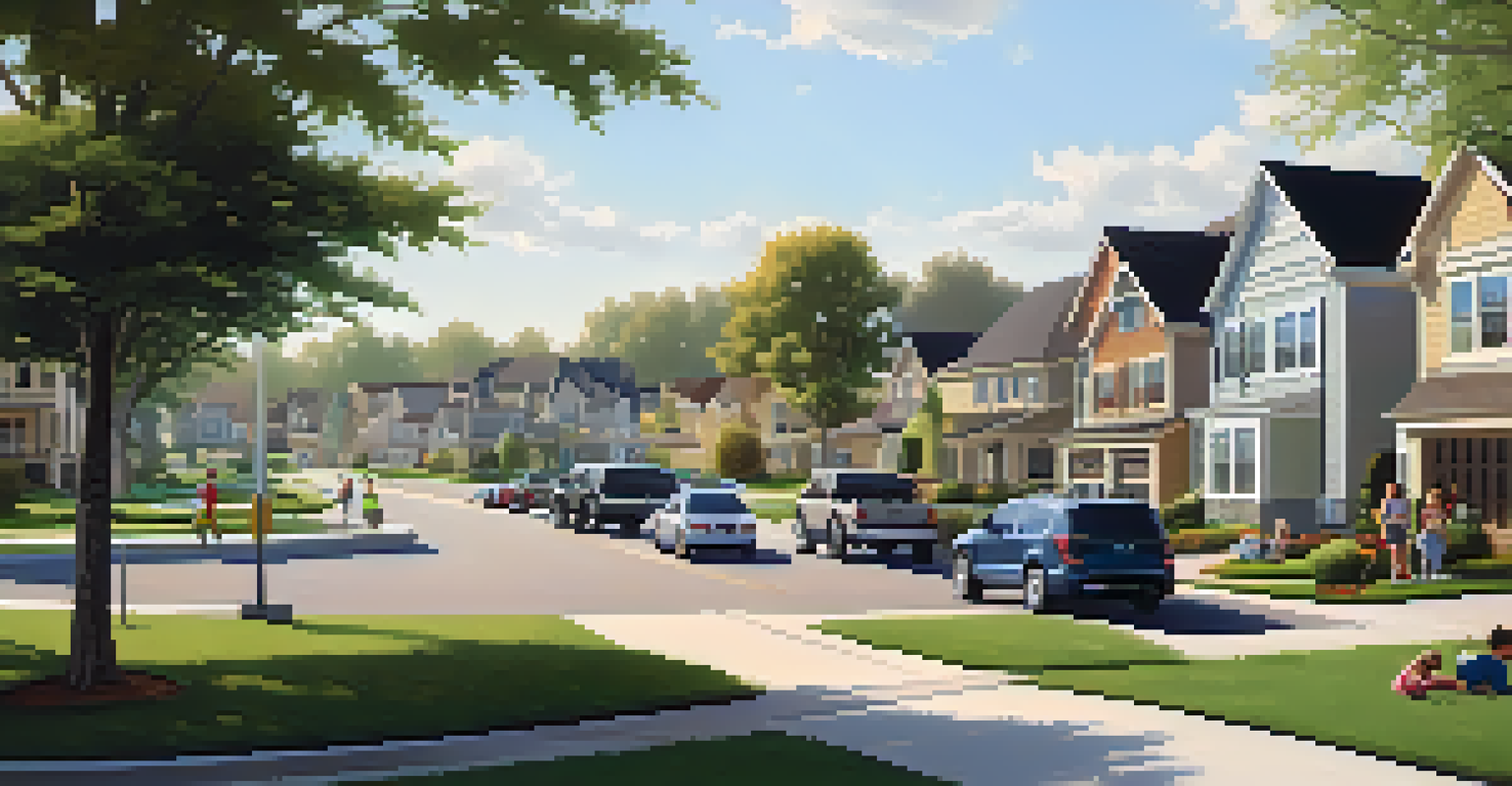How Transportation Infrastructure Shapes Property Values

Understanding the Basics of Property Values
Property values are influenced by various factors, but location is paramount. The proximity to amenities, schools, and transportation options can significantly affect how much a property is worth. Buyers often seek convenience, making areas with good transport links more desirable.
Location, location, location – the three most important factors in real estate.
For instance, homes near public transit stations tend to appreciate faster than those in isolated locations. This trend reflects buyers' desires for easy commuting options, which enhance their quality of life. In essence, transportation infrastructure serves as an invisible hand guiding property demand.
Moreover, the overall economic health of an area can be tied to its transportation facilities. Regions with well-maintained roads and efficient public transit networks often experience increased business activity, attracting more residents and driving property values upward.
The Role of Public Transportation in Value Increase
Public transportation systems, like buses and subways, play a crucial role in shaping property values. When a new transit line is introduced, it can transform an area, making it more attractive to potential buyers. This surge in interest typically leads to an increase in property prices.

Take, for instance, cities that have invested heavily in expanding their subway systems. Areas that were once considered less desirable suddenly become hotspots for homebuyers, leading to a real estate boom. The convenience of commuting can outweigh other factors like property size or age.
Location Drives Property Values
Proximity to amenities, schools, and transportation options significantly influences how much a property is worth.
Additionally, the presence of public transport can create a sense of community. Residents are more likely to engage with their surroundings and enjoy local businesses, making neighborhoods with good transit options vibrant and appealing, further driving up property values.
Highways and Their Impact on Suburban Growth
Highways can dramatically influence property values, particularly in suburban areas. As highways expand and improve, they provide easier access to urban centers, attracting families looking for more space without sacrificing convenience. This trend leads to suburban areas experiencing real estate booms.
Transportation is a key factor in determining the value of real estate, as it connects people to opportunities.
For example, consider a suburban town that adds a highway interchange. As travel times to the city decrease, the demand for homes in that area can skyrocket. Buyers are willing to pay a premium for the benefits of suburban living combined with quick access to urban amenities.
However, it's essential to note that proximity to highways can be a double-edged sword. While it can increase property values, noise and traffic congestion may deter some buyers. Balancing these factors is crucial for understanding how highways shape local real estate markets.
Bike Paths and Walkability: New Trends in Urban Areas
In recent years, there's been a growing trend towards walkability and bike-friendly infrastructure. Cities that prioritize bike paths and pedestrian zones often see an increase in property values, as more people seek out these amenities. A neighborhood that is easy to navigate on foot or by bike tends to attract a younger demographic.
Consider an urban area that has invested in creating extensive bike lanes and pedestrian walkways. As these improvements roll out, property values can rise, as buyers appreciate the lifestyle benefits of living in a walkable community. This shift reflects a broader change in how people view transportation options.
Public Transport Boosts Home Prices
The introduction of new public transit lines can transform neighborhoods, making them more attractive and leading to increased property prices.
Moreover, neighborhoods that integrate green spaces and recreational paths often foster a sense of community. This can lead to enhanced quality of life, further driving demand for properties in those areas. As more buyers seek out these lifestyle advantages, property values tend to follow suit.
The Effect of Infrastructure Investments on Neighborhoods
Infrastructure investments can have far-reaching effects on property values. When governments allocate funds for improvements, such as new roads or public transport systems, the surrounding areas often benefit significantly. These investments signal growth and stability, which can attract buyers.
For example, a city that invests in revitalizing a neglected neighborhood by improving transportation options can see a sharp rise in property values. New businesses may open, and the influx of residents can create a vibrant community atmosphere. This transformation often leads to increased demand for housing.
However, it's important to consider that not all infrastructure investments yield positive results. If poorly planned or executed, they can lead to disruptions and frustrations for current residents, which may negatively impact property values in the short term. Strategic planning is key to harnessing the benefits of such investments.
Gentrification: The Transportation Dilemma
Gentrification is a complex issue often tied to transportation infrastructure improvements. As neighborhoods become more accessible through enhanced public transit or road networks, they may attract higher-income residents. This shift can drive property values up, pushing out long-time residents who can no longer afford to stay.
For instance, when a previously underdeveloped area gains a new light rail line, property values may skyrocket as new residents move in. While this can lead to urban renewal, it also raises concerns about displacement and the loss of community character. Balancing growth with equity is a significant challenge in these scenarios.
Smart Transport Shapes Future Markets
Emerging smart transportation systems are poised to influence property values by attracting tech-savvy buyers looking for modern amenities.
Ultimately, while transportation improvements can boost property values, they can also lead to unintended consequences. Stakeholders must consider the broader implications of these changes to ensure that all community members benefit from infrastructure investments.
Future Trends: Smart Transportation and Property Values
As technology continues to advance, smart transportation systems are emerging as a new influence on property values. These systems, which integrate data and technology to enhance mobility, promise convenience and efficiency. As cities adopt smart solutions, areas benefiting from these innovations may see property values rise.
For example, neighborhoods equipped with real-time transit information, smart traffic signals, and connected bike-sharing programs can attract tech-savvy buyers. The appeal of living in an area that prioritizes modern transportation solutions is becoming increasingly important to homebuyers, particularly younger generations.

Moreover, the rise of autonomous vehicles could reshape property value dynamics even further. As these technologies develop, areas with infrastructure designed to accommodate them may become highly sought after, influencing real estate trends in ways we are just beginning to understand.